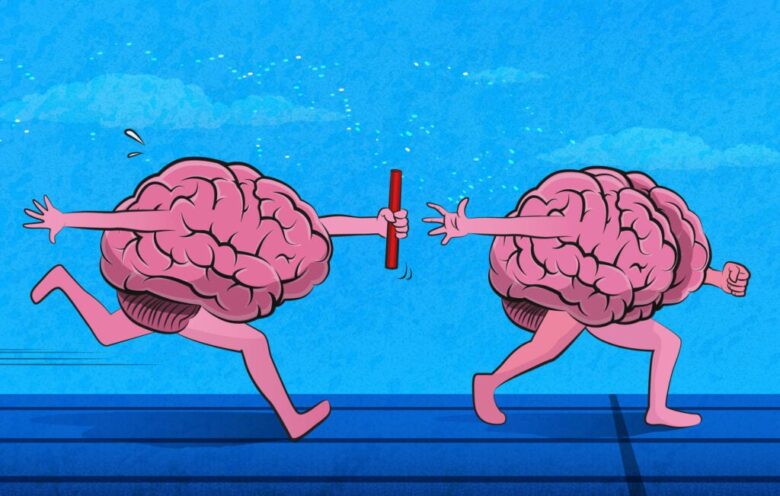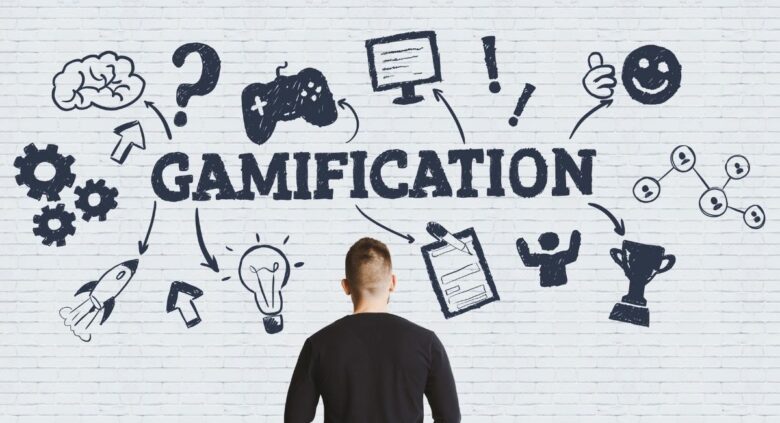One of the biggest struggles today is the daily bombardment with lots of stimuli. This hurdle means people find it too difficult to assign their few resources and time to education and development. Fortunately, education professionals have found effective ways to address their users’ educational needs in today’s digital age, filled with numerous distractions. Most educational websites and apps now leverage microlearning to beat this setback.
This methodology entails using brief and more gripping education units where students can easily interact with bite-sized educational content. At the same time, they still achieve an enlightening and wholesome erudition experience.

Source: learnworlds.com
Contents
An Overview of Microlearning
Microlearning is an education strategy where apprentices access new data in small chunks. Classroom sessions in this setup typically last ten minutes or less, with some taking as low as a minute. These “microlessons” act as foundational material that forms more profound educational programs.
Students can participate in and leave the lessons. In addition, they can attend several sessions continuously when they have the morale, allowing them to study and gain knowledge more profoundly.
The nonlinear microlearning approach plays perfectly well with today’s adult learners. This approach follows the Hermann Ebbinghaus forgetting curve concept. This popular theory illustrates the decline in a person’s memory with time.
Hermann notes that retention decreases rapidly in the initial period after learning new information and then levels off. The German psychologist recommended regular information review and reinforcement to enhance long-term learning.
This is precisely what the microlearning concept entails. The strategy can enhance learners’ experience as they’ll study within manageable durations with little or no disruptions. It also trains the brain to prioritize relevant information.
What Does Microlearning Look Like?
You’ve probably encountered a situation where you’re searching for brief content for urgent use, like completing your college assignment or helping your child or younger sibling with theirs. In this case, a buyessay website can help with that. From here, you can deeply comprehend content from a subject expert. Sometimes you might need more details to address a particular writing need.
This is the primary blueprint of microlearning – creating noteworthy instruction through apt, well-organized, and applicable experiences. Microlearning can include vast instructional items, from live presentations, short films, and games to offline errands. Education experts sometimes combine multiple brief learning programs in a complete yet compact concept review. These lessons are highly visual, hence engaging students for longer.
Generally, effective microlessons underscore constant run-through and information application. The most reliable online educators only prioritize content that can inform any reader so that they can take action or decide on something.
In addition, such platforms offer real-life scenarios as part of the concept elaborations. You’ll also encounter engaging appraisals with instant feedback, quick tips, and job aids. All these can help the learner reinforce and apply what they’ve learned.

Source: axonify.com
Why Does Microlearning Work?
The microlearning concept is fairly new. However, many educators have adopted this transformative approach and are reaping its rewards. So, why is the approach gaining popularity that fast? Here’s why:
Content Consumption Takes Way Less Time
Time restriction ranks among the greatest education inhibitors. People are too preoccupied to advance their education or study long-form content. But microlearning can beat this hurdle, as learning under this program is quick. The maximum you’ll spend studying such content is 10 minutes.
Considering all that you’re supposed to handle, the more attention you give your education, the better. Essentially, we all need to upskill to advance in our careers, but if you lack the time for this, then your goal will end up a pipe dream. Most people now rely on microlearning to learn in small bits, taking less time.
It’s Cheaper
Digital educators have one primary fact to rejoice in, producing a microlearning instruction program isn’t a huge financial investment. The courses have minimal resource requirements, and content creation doesn’t require special tools or additions. All it takes is a standard LMS content editor and a dedicated microlearning platform.
This affordability trickles down to users; students can acquire any educational material they need without breaking the bank.

Source: xqsuperschool.org
It Makes Learning Engaging
Staying engaged in extended classroom sessions isn’t easy, even if you have an enviable attention span. But if you understand that it’ll only take a handful of minutes, you’ll easily sit and complete it.
When it comes to keeping learners engaged, very few educational methodologies can beat microlearning. Most users compare this experience to browsing their favorite social networking site on their PC or smartphone.
Microlearning facilitates active participation and interest by eliminating the “serious learning” environment we’re accustomed to. This motivates learners to focus and absorb details more effectively. In the long run, students will retain what they’ve learned.
It’s Flexible
Microlearning is considered flexible due to its unique characteristics and approach to learning. For starters, there are no limitations to microlearning. Instead, you can use the content to study any subject. In fact, the programs are similar to regular eLearning programs, but users usually explore easy-to-grasp, bite-sized information.
Many reputable education platforms have courses that explore vast subjects. So, no matter the topic’s complexity, you’ll have something brief and understandable to guide you through. What microlearning does is deliver information in small, easily digestible units. These bite-sized modules or lessons focus on specific topics or learning objectives. Learners can then engage with these short bursts of content at their own pace and convenience, making it flexible for fitting into busy schedules.
Provides Personalized Learning
Of course, microlessons aren’t built from scratch. Rather, they capitalize on the already available knowledge. Consequently, learners can decide the level of information displayed.

Source: ies.ed.gov
Delivers Quality
Some users may be concerned about the quality of educative content thanks to the minimized learning material. But this shouldn’t scare you as this model delivers relevant and high-quality education.
Education experts must be highly selective when coming up with their compact courses. Besides including only relevant facts within the short modules, they prioritize content quality. Doing this ensures a fulfilling learning experience.
It Boosts Knowledge Retention
Finally, the obvious benefit also serves as a primary goal of most microlearning programs. Typically, these bite-sized lessons emphasize repetitive study and constant information revisiting whenever learners feel like they’re losing some facts. As a result, students can retain information much better. This study method matches microlearning units perfectly since details are self-contained and small, allowing learners to make quick references.
How to Get Microlearning Right
Generally, it’s easy to create microlearning programs, and completing them is even faster. But you can only get it right with microlearning by doing it right. Fortunately, the following best practices will guide you:

Source: maxlearn.com
Determine If the Model Befits Your Case
Education professionals must review their training models before implementing microlearning. The strategy may achieve its goals if you handle complex subjects or those that learners must study comprehensively. The same applies to courses capitalizing on in-person instruction. The approach can come through if you offer supplementary training.
Recycle Existing Material
You don’t have to create a new lesson plan. Rather, you can beat the hurdles if you already have scholastic materials. One of the most effective steps is to split sections of your current training material into minor segments. Just let each segment makes sense. You also have the option to redraft other parts of your prevailing material to fit your intended structure.
Spice Things Up With Multimedia
One of the primary objectives of bite-sized learning is to kill boredom, a trait typical of completely text-based courses. Thus, you can make your courses more engaging with pictures, instructive clips, animations, and illustrations. Anything that can keep users’ interest goes. Remember to think carefully when choosing the media to include. Generally, focus on adding value to your material rather than enhancing its appearance.

Source: kompas.com
Skim the Fat
When reusing your available learning material, avoid copying and pasting loads of information straight into your microlessons. Instead, reexamine the data and design a specialized course that meets your lesson objectives.
Grant Seamless Access
The key attractions to microlearning are it attracts learners of all ages and is flexible. Learners don’t have to be tied down to their PCs to finish a course. Therefore, ensure availability and open access; users can find everything on any gadget. Optimizing your education platform for mobile greatly enhances user experience.
Include Micro-Assessments
Successful microlessons must include micro-quizzes. Therefore, include brief assessments for students to evaluate their progress and ensure it aligns with their goals.
Use Gamification
Gamification is vital to your microlearning strategy as it makes it easier to gain knowledge and enhances learning. In addition, this engagement resource is even more effective if you optimize your microlearning platform for mobile.

Source: emizentech.com
Always Include Recurring Content
Is the Hermann Ebbinghaus curve concept still in your mind? You can keep the knowledge longer when you constantly recall what you’ve studied. So once learners complete their modules or brief microlearning segments, they should be able to go through what they’ve learned. Effective examples include a bullet list summarizing the key facts, a quiz, or anything that can refresh the user’s memory.
